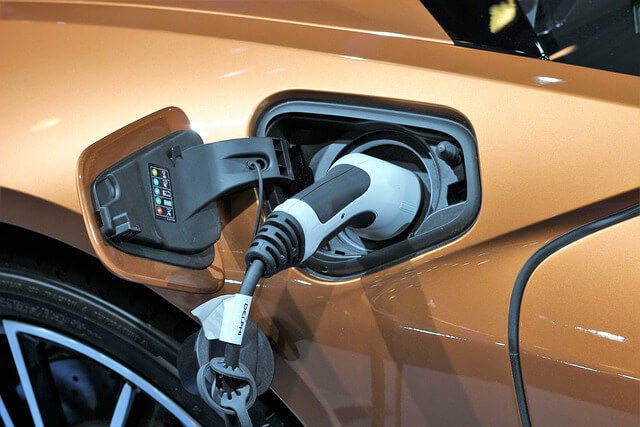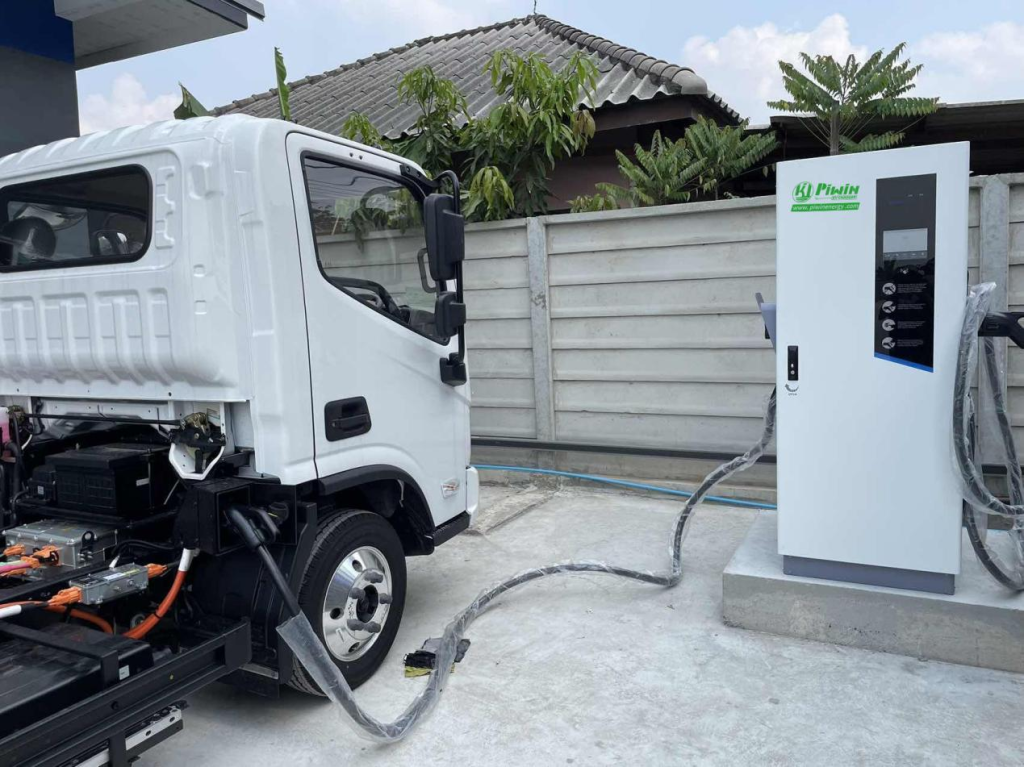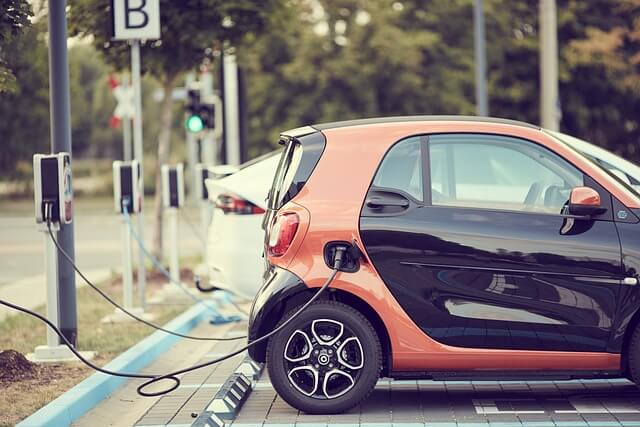
Products
Fast, Reliable, Everywhere

Solutions
Efficient, Innovative EV Charging Solutions.
News
We are committed to the innovation and application of EV charging.
As the electric vehicle (EV) market expands rapidly, DC fast charging technology is becoming increasingly vital for the efficient and effective operation of electric vehicles.
Maximizing the advantages of DC fast charging is essential for optimal performance, whether for businesses or consumers. This guide offers insights into optimizing DC fast charging for enhanced efficiency and convenience.
Whether you're an EV owner or simply interested in energy solutions, this guide will help you fully understand how to make the most of DC fast charging technology.

Striking the right balance between DC fast charging and regular charging is crucial for optimizing EV performance and prolonging battery life.
While DC fast chargers can rapidly charge your vehicle to 80% in 20-30 minutes, this rapid charging generates more heat and may accelerate battery degradation if used excessively.
A study by the Idaho National Laboratory (INL) found that EV batteries primarily charged at DC fast charging stations showed a 10% reduction in capacity after 50,000 miles compared to those primarily charged with Level 2 chargers.
To mitigate this, it's recommended to use DC fast charging for long trips or when time is tight, while relying on slower Level 2 charging for daily charging at home or work.
DC fast charging is highly effective in certain situations, such as long trips or emergencies.
Long Trips: For instance, on a 215-mile journey from New York to Boston, most EVs, with a typical range of around 300 miles, can complete the trip with just one quick session at a DC fast charger.
A 150 kW DC fast charger can add about 200 miles of range in roughly 20-30 minutes, allowing you to get back on the road quickly. According to the International Energy Agency (IEA), DC fast chargers can provide 80% charge in around 20 minutes, making them ideal for road trips or long commutes.
Emergency Charging: When you're far from a planned charging station, unexpected detours or delays can sometimes lead to low battery levels.
In such cases, a nearby DC fast charging station can be a lifesaver, providing the power needed to reach your destination or the next available charging point. This rapid charging capability ensures you won’t be stranded and can continue your journey with peace of mind.
Busy Urban Areas: In densely populated urban centers like Los Angeles or New York City, parking spaces and time are often at a premium. DC fast charging stations in these areas can quickly charge your vehicle while you run errands or attend meetings, making the most of your time and ensuring your vehicle is always ready to go.
By understanding these scenarios and incorporating DC fast charging into your routine, you can optimize your EV usage, save time, and maintain flexibility in your travel plans.

Imagine starting your day with back-to-back meetings or running errands across town. Instead of waiting for extended hours to charge your EV, a quick 15-20 minute stop at a DC fast charging station can give you 100 miles of range, allowing you to seamlessly continue your busy schedule.
This quick charging capability means you're less likely to lose time to charging needs, enabling you to manage your time more effectively and flexibly.
In urban environments where parking and charging opportunities are limited, the ability to quickly charge your vehicle while grabbing coffee, attending a meeting, or shopping is a major advantage. It reduces the need for long-term parking and ensures that even on your busiest days, your EV is always fully charged and ready to go.
Moreover, DC fast charging is particularly beneficial for those who cannot charge at home, such as apartment dwellers or those relying on public charging infrastructure. By incorporating daily fast charging into your routine, you can maintain the convenience of EV ownership without disrupting your schedule.
In summary, daily use of DC fast charging enhances the practicality of EVs, making them a viable option for even the most demanding lifestyles. With the ability to charge quickly and get back on the road, DC fast charging supports your busy life without missing a beat.
This daily convenience is especially useful for urban commuters and professionals who depend on their EVs for daily transportation. Research indicates that fast charging infrastructure helps increase EV adoption, reduce range anxiety, and improve the overall user experience (source: BloombergNEF).
While DC fast charging is convenient, maintaining battery health requires careful management of charging habits.
For instance, Tesla recommends avoiding frequent use of DC fast chargers to charge the battery to 100% unless absolutely necessary. Instead, it's advised to charge to around 80-90%, as this reduces battery stress and minimizes heat buildup, which are key factors in battery performance degradation.
Additionally, a study highlighted in Power Magazine emphasizes that consistently using DC fast charging to full capacity can lead to a 5% faster battery degradation over three years compared to more moderate charging habits.
Therefore, while daily fast charging is feasible, it's best to adopt a practice of charging only up to 80% to maintain long-term battery health.

To maximize the efficiency of DC fast charging, timing is crucial. Charging during off-peak hours not only reduces wait times but also lowers energy costs, especially if your charging station uses time-of-use (TOU) rates.
Here is a comparison table showing the differences in cost and wait times between off-peak and peak hours for using DC fast charging, based on the assumption of TOU rates.
| Parameter | Off-Peak Hours | Peak Hours |
| TOU Rate | $0.12/kWh | $0.25/kWh |
| Charging Time | 30 minutes | 30 minutes |
| Energy Charged | 50 kWh | 50 kWh |
| Charging Cost | $6.00 | $12.50 |
| Average Wait Time | 5 minutes | 20 minutes |
| Total Time (Wait + Charge) | 35 minutes | 50 minutes |
| Charging Cost Difference | - | + $6.50 |
| Wait Time Difference | - | + 15 minutes |
Explanation:
TOU Rate (Time-of-Use Rate): TOU pricing applies different electricity rates during different times of the day. Off-peak hours have lower rates, while peak hours have higher rates.
Charging Cost: The cost is calculated by multiplying the energy charged (50 kWh) by the corresponding TOU rate.
Average Wait Time: During peak hours, wait times are typically longer due to increased demand for charging.
Analysis:
Charging Cost: Charging during off-peak hours can save $6.50 in charging costs (based on the rates above). This cost difference can be significant over time for frequent users of DC fast charging.
Wait Time: During peak hours, wait times can increase by 15 minutes or more, adding to the total time and potential inconvenience.
Therefore, charging during off-peak hours not only effectively reduces energy costs but also minimizes wait times, improving overall efficiency.
According to a report by the California Public Utilities Commission, charging during off-peak hours can reduce energy costs by up to 50%, making it an economical choice for frequent chargers.
Many modern EVs and charging stations come equipped with preconditioning features that can preheat or cool the battery before charging begins.
This process optimizes battery temperature, resulting in faster and more efficient charging. Tesla's research indicates that preconditioning can reduce DC fast charging time by up to 25%, particularly in cold weather conditions.
DC fast charging is a powerful tool for maximizing EV efficiency, especially when used strategically.
By balancing fast charging with regular charging, using it in ideal scenarios, and following best practices like optimizing charging times and utilizing preconditioning features, you can fully enjoy the benefits of this technology without compromising battery health.
Our solutions are backed by cutting-edge research and are tailored to ensure the highest levels of efficiency and reliability. Contact us today to learn more about how our energy solutions can power your future.
